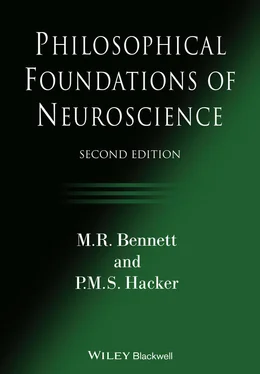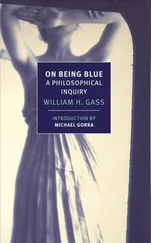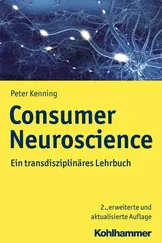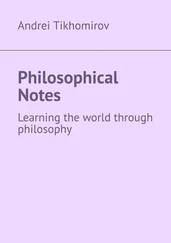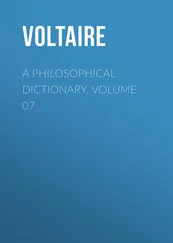Descartes’ s primary contribution
Nevertheless, Descartes had made the fundamental contribution of opening up all animal activity to mechanical analysis – that is, to what became physiology and neuroscience. Furthermore, by associating the psychological capacities of humans with the pineal gland, he had moved consideration of their physical dependence from the ventricles (filled now with particles of the animal spirits rather than with the psychic pneuma of Galen) to the matter of the brain – in his case the pineal gland. This shift of attention from the ventricles to the substance of the brain became definitive as a result of the work of a young man who was but twenty-nine when Descartes died, Thomas Willis.
1.3 The Cortical Doctrine of Willis and Its Aftermath
Thomas Willis: the basis of psychological functions in the cortex
As a consequence of his observations on patients with neurological problems, who subsequently died and so could be examined postmortem, the Professor of Medicine at Oxford, Thomas Willis (1621–1675) reached the conclusion that the psychological attributes of humans are functionally dependent on the cortex and not the ventricles. This he argued at length and with great force in his classical work De anima brutorum 57and in his Cerebri anatome, cui accessit nervorum descriptio et usus , 58the persuasive power of which was greatly assisted by the magnificent drawings made from Willis’ s sketches by the young Christopher Wren. Willis gave the first cortical theory of the control of the musculature and of reflex control. He assigned to man and to all other animals (‘brutes’) a system of particles found throughout their bodies which he called ‘the Corporeal Soul’. ‘This soul … arises together with the body out of matter rightly disposed. It cannot be perceived by our senses, but is only known by its effects and operations. If the body or this soul is hurt in such a way that the particles of the soul disappear from the concretion … the body being made soulless tends to corruption’ ( ABN 6f.). Willis now explained in detail the role of the vital spirits (or vital liquor) of the blood circulated in the heart and vessels and that ofthe animal spirits (or animal liquor) of the brain and nerves – the term ‘spirits’ being takenin the Cartesian sense: namely, as the distillation of a liquor. The animal spirits are derived from the vital spirits ( ABN 22f.). The corporeal soul is associated with both of these liquors.
Animal spirits from the cortex activate muscles through the nerves
The role of the animal spirits in integrating the activity of the cortex and the movement of muscle is then spelled out:
We have shown that the Animal Spirits are made in the cortex of the brain and cerebellum, whence they descend and flow into the middle and marrowy parts where they are kept in sufficient amounts to be used for the various purposes of the Soul. Animal Spirits flow from there to the oblong and spinal marrow, and thence into the nerves and nervous shoots, activating and expanding these. Finally, sufficient amounts of Animal Spirits are distilled from the ends of the nerves implanted in the muscles, membranes and viscera, and so activate them, the organs of sense and motion. ( ABN 24)
In brutes, the cortex lies in a reflex arc from sensation or perception to motor act
How is the flow of the animal spirits in and from the cortex to muscles initiated? To answer this, Willis first describes how the flow of animal spirits occurs in the brain when an organ of perception is excited ( ABN 38). He then links an animal’ s perceiving something with a subsequent motor act. This description places the cortex in a reflex arc from sensation to motor act, and it is clear that Willis thought that in all animals other than man all motor acts are reflex, for he comments that ‘because brutes or men, whilst they as yet know not things, want spontaneous appetite. So long therefore, they being destitute of the internal principle of motion, move themselves or members, only as they are excited from the impulse of the external object, and so sensation preceding motion, is in some manner the cause of it’ ( ABN 59). The reflex nature of many motor acts is emphasized in his comments on the behaviour of some animals when they are cut in pieces ( ABN 17).
Human acts of will are possible due to interaction of soul and body in the cortex
But what of volitional acts that man alone performs? Here Willis invokes the idea of the rational soul, which is immortal ( ABN 39). To carry out a volitional act, we must be aware of the object towards which the act is directed ( ABN 58). Willis identifies the rational soul in the brain as doing the perceiving, which he spells out in detail ( ABN 59). The rational soul, he held, beholds this image in the corpus callosum. 59His conception of the formation of an internal representation upon the corpus callosum is reminiscent of Descartes’ s idea that an image of what is seen must be produced on the surface of the pineal gland, where it is ‘presented to the soul’. And Willis’ s supposition that the rational soul ‘beholds the image of the thing there painted’ at least approximates the very error that Descartes warned against (and then partly succumbed to): namely, of explaining how the human being can see an object by appealing to the soul’ s seeing or apprehending a representation of the object in the brain.
So, volitional acts are initiated by the rational soul, located in the corpus callosum, after the animal spirits have delivered ‘the images or representations of all sensible things’ from the common sensory:
[N]othing seems more probable than that these parts [corpora striata] are that common sensorium that receives and distinguishes all the appearances and impressions and transfers them in suitably ordered arrangement into the corpus callosum, represents them to the imagination presiding there, and transmits the force and instinct of those spontaneous movements begun in the brain into the nervous appendix for performance by the motor organs. 60
Willis then associated the functions of perception, memory and volition with the cerebral cortex. In particular he associated these functions with the gyri of the cortex, so that animal spirits move between the gyri. The gyri, he held, were much more numerous in humans than in other animals because of the superior intellectual powers of human beings ( ABN 65–8).
Willis explicitly subscribes to the Cartesian idea of an immaterial soul or mind, that perceives and performs acts of will initiating motor action and that interacts with the body. Like Descartes (and many others), he held that because the rational soul is immaterial, therefore it has no parts. Having no parts, it is indestructible, for all destruction is decomposition into parts. The important difference between Willis and Descartes is that Willis locates the point of causal interaction between the mind or rational soul and the body in the cortex – namely, in the corpus callosum – and not, like Descartes, in the pineal gland, incorrectly located in a ventricle. However, just as Descartes was left with the insoluble problem of explaining the interaction of the mind with the pineal gland, so Willis was left with the problem of the explaining the interaction between the immaterial rational soul and the material corporeal soul in the corpus callosum. So no explanation is provided as to how the bond is formed between the rational soul and the corporeal soul, which are placed in a state in which they can interact by God at birth: ‘That this immortal soul (the Rational Soul), for as much as it cannot be born, as soon as all things are rightly disposed for its reception, in the humane formation of the child in the womb, it is created immediately of God, and poured into it’ ( ABN 41f.).
Читать дальше
